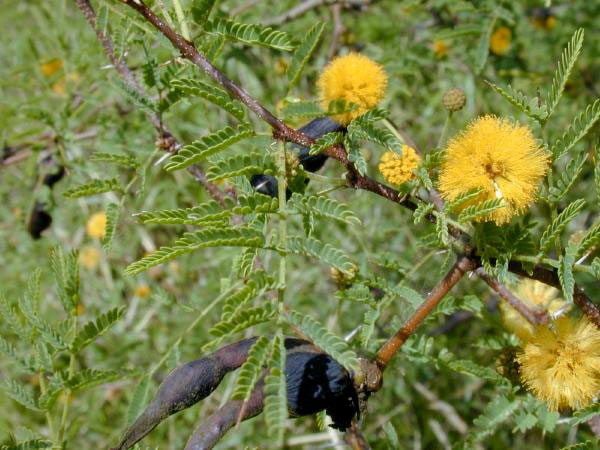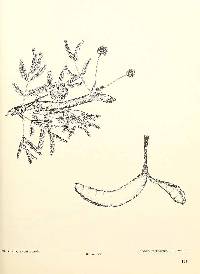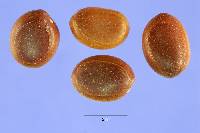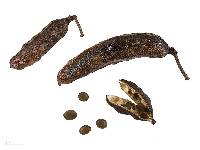
Found in thickets and forests in dry coastal areas.Small tree to 20' in height witha broad spreading crown anddrooping branches; trunk to 5" in diameter.
DESCRIPTION
Bark: Reddish-brown, smooth when young, later irregularly broken into netted ridges, peeling off in large, thin strips. Leaves: Deciduous, alternate, twice pinnately compound, 2" to 4" long; leaflets in 10 to 25 pairs, oblong with sharp apex, 1/8" to 1/4" long; bright green in color. Flowers: Small, showy, fragrant, golden yellow; borne in dense, round, ball-like clusters to 2/3" in diameter on 1" stems. Flowering November to February. Fruit: Dark brown pods to 3" long and 1/2" broad, straight or slightly curved; seeds 5/16" long, brown, elliptic, slightly flattened.
GROWTH RATE: Moderate to fast.
SALT TOLERANCE: High.
DROUGHT TOLERANCE: High.
PROPAGATION METHODS: Seeds.
LANDSCAPE USES/LIMITATIONS
Very decorative as a small ornamental with its fem-like foliage and highly fragrant floral heads. Planted in a row, may be pruned as a privacy hedge. Small branches have paired, sharp thorns.
USES
Wood is hard and heavy, but because of small size was used primarily as fuel. The tree is grown commercially in southern Europe where a perfume is distilled from the flowers. Bark and pods are high in tannin content and are used for tanning and in dye production.
CONSERVATION NEEDS
Should be used much more widely as a landscape plant to increase its numbers.
Copyright ©2018. This project is managed by the St. George Village Botanical Garden and the portal development is powered by Symbiota software. Usage Policy.





